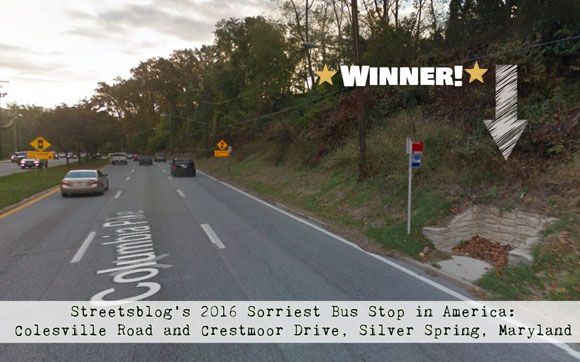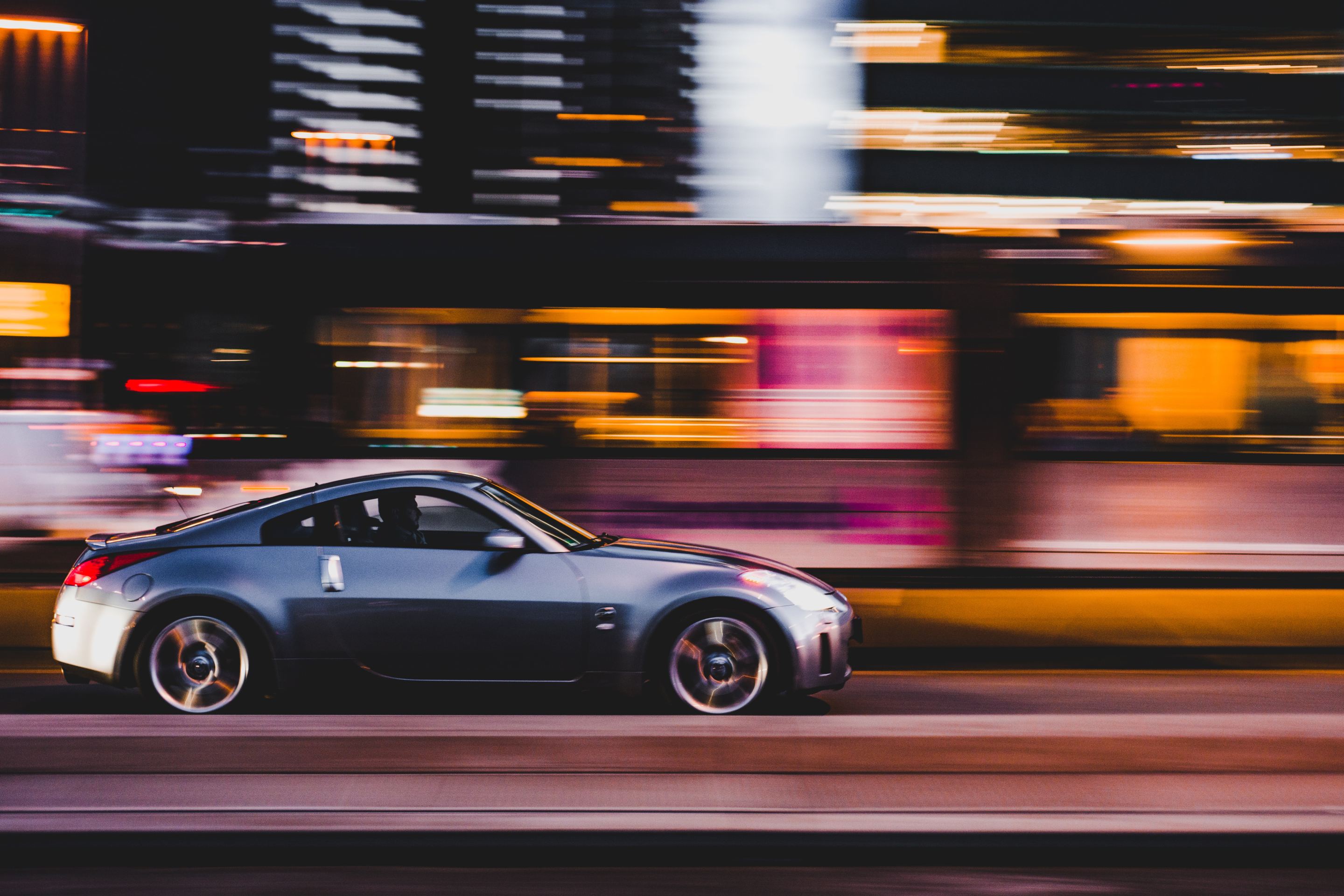
Streetsblog just wrapped up our 2016 Sorriest Bus Stop in America competition, with a waiting area on a state highway in Silver Spring, Maryland, beating out 15 other terrible bus stops for the crown of shame. For our voters, asking people to cross a six-lane divided road with no signal was unforgivable.
To make the pedestrian environment around bus stops better, state and local DOTs need to step up. In this case, after a Washington Post investigation prompted a round of fingerpointing from the responsible agencies, it was encouraging to hear that Montgomery County wants to coordinate with the Maryland State Highway Administration to improve pedestrian access to the Silver Spring stop.
But complaints about poor conditions at bus stops don't always reach the right target or call for the best solution, writes Jarrett Walker at Human Transit. Here's his advice for dealing with sorry bus stops:
Be careful who you blame. Most transit agencies have no control over bus stops, but the media loves to blame transit agencies for everything. When talking about this, be clear that cities or highway authorities are usually the ones who created this situation.
Ask: “Would no bus stop be better?” In many cases, the best way to get off of a “sorriest bus stop” list would be to remove the stop. That’s certainly the only option that the transit agency is likely to have, so if everyone agrees that this is the transit agency’s fault, you’re pushing them in that direction. This could even be a good idea in some cases. Wider stop spacing always means faster service, and a better case for good infrastructure at the stops that remain.
Is the Issue the Stop or the Crossing? In this case, I’d argue that the big issue is the lack of a safe place to cross the street. Transit agencies do sometimes get sued because someone got hit crossing the street at one of their bus stops. (Remember, transit agencies get blamed for everything.) I do sometimes tell transit agencies to consider pulling out bus stops in places where it’s not safe to cross, for three reasons: (1) It reduces accidents for which the transit agency will be blamed, (2) stops where you can’t cross the street give you one-way service, which is never of much use, and (3) it helps put the onus on the city or highway authority to fix the problem if they want the stop.
Ask: “Is the service permanent?” or “Does the service have ridership growth potential?” Many sorry stops are on coverage routes, which are low-frequency services in places where the development pattern is hostile to transit anyway. Coverage routes have predictably low-ridership, and low-ridership service is less likely to be permanent. These services are much more likely to be replaced by various new transportation options — including partly subsidized taxi/Uber/Lyft etc — than high-ridership lines are. Building permanent infrastructure around a service that may not be permanent is a bad idea. In the worst cases, transit agencies are forced to run inefficient service solely in order to maintain the illusion that the infrastructure has value.
Elsewhere on the Network today: Better Bike Share Blog reports that some California cap-and-trade revenue may improve access to bike-share in low-income neighborhoods. And Second Avenue Sagas pays tribute to Robert Kiley, the transit agency executive whose leadership was critical for systems in Boston, New York, and London, and who died yesterday at age 80.





